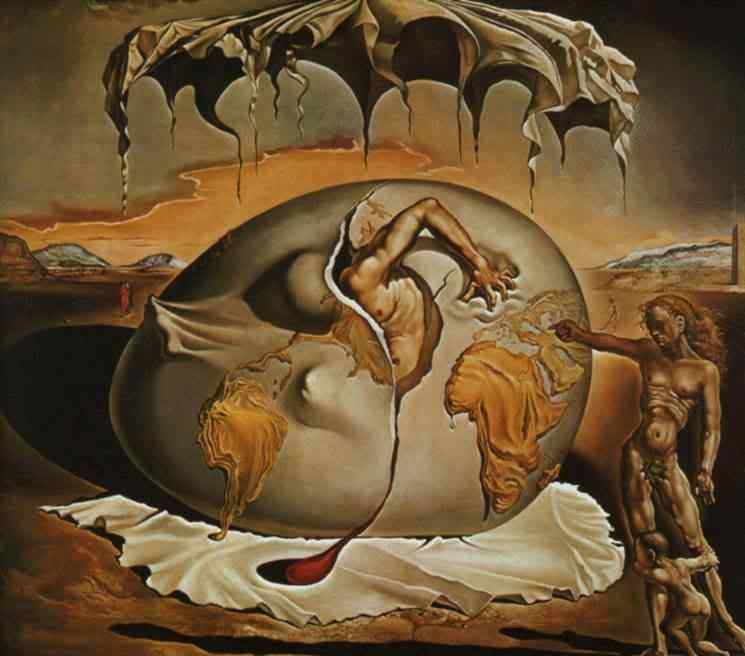
As the extra terrestrials gaze upon their struggling captive inside the egg that has now boiled due to the climate, a molten rock creature has protruded from the interior crust of the unknown planet. The being who was created larger, begins to plead for the man to not destroy his protective shell, for she senses he may be the one to save her from the creature who plagues the planet. He tears through the shell that protects him from the creature, though he begins to drip blood and she wonders if he is man at all, or woman like herself who bleeds as well. A prophet in a red cloak approaches her. He begins to explain to her this whole phenomena of a place. This place is called earth. The small one who reaches for her in terror is her child and longs for her returning grasp. The man in the shell is her child’s father, who will provide shelter and made the child exist. She is human, and all humans are mortal. He bleeds because he is hurt, and her stomach shrivels because she has hunger. The molten rock creature symbolizes the hurtles that life offers and the canopy that overhangs the man represents the solution, which is unity. If they become one, they can defeat the struggles.
In the above analyses of Salvador Dali’s “Birth of Man”, the writer implicates the meaning of the painting to be a simple family dealing with the usual problems life on earth demands. Though the way the writer presents this information is in an unfamiliar way. Viktor Schkolvsky would call this defamiliarization or making the concept unfamiliar to the viewer (1). Schkolvsky says on this topic, “The purpose of art is to impart the sensation of things as they are perceived and not as they are known” (1). The writer of this analyses has appealed to the senses of a person, and not merely stated a fact. Though it is a basic concept of life, it has been dramatized and shown in a different and abstract perspective. The common human being was compared to an extra terrestrial, the struggles of life were depicted as a molten rock creature, the blood and starved stomach symbolized the weaknesses of mortals. As well, the cloth canopy represented unity or the solution, an ordinary man in red was the moral guidance, and planet earth was shown as a hot foreign climate. With all the metaphors, the interpretation was still simple when the writer explained each figures meaning. This style of writing is favored by formalists. The writer as well parallels the painting by giving each figure a different meaning, therefore giving it an unfamiliar perception or interpretation to the viewer. Schklovsky relates the purpose of parallelism to the same as imagery, which he says, “is to transfer the usual perception of an object into the sphere of new perception - that is, to make a unique semantic modification” (4). The writer defamiliarizes the basic concept of a family living on earth and parallels it with extremes.
Works Cited
Dali, Salvador. “Birth of Man”. Web. http://www.harkeyahh.com/harkgall/?i=./Salvador%20Dali
Schkolvsky, Viktor. "Art as a Technique." 1-6. Www.vahidnab.com. Web.
No comments:
Post a Comment